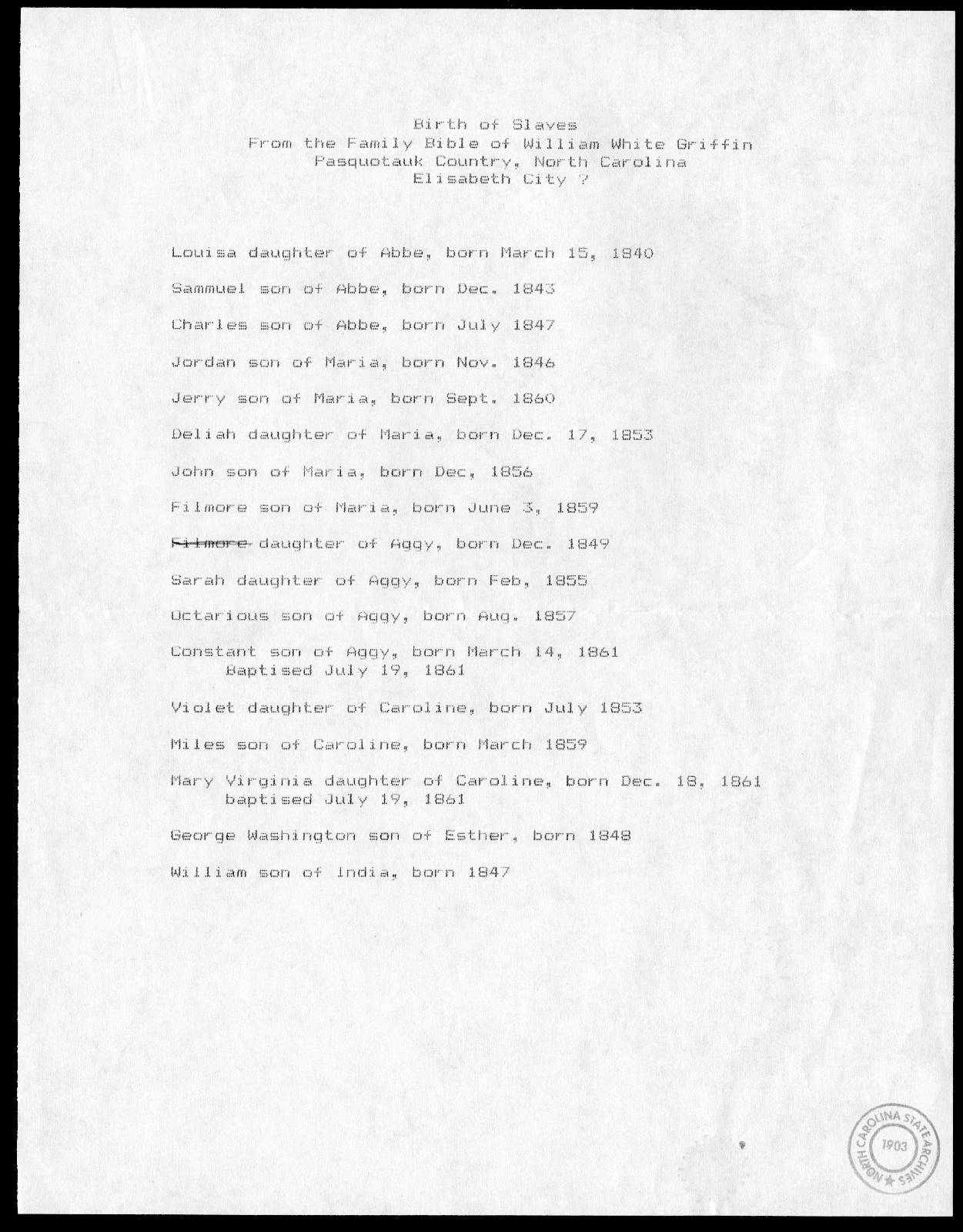This text is part of the Teaching Hard History Text Library and aligns with Key Concept 7.

Birth of Slaves
From the Family Bible of William White Griffin
Pasquotauk Country, North Carolina
Elisabeth City
Louisa daughter of Abbe, born March 15 1840
Sammuel son of Abbe, born Dec. 1843
Charles son of Abbe, born July 1847
Jordan son of Maria, born Nov. 1846
Jerry son of Maria, born Sept. 1860
Deliah daughter of Maria, born Dec. 17, 1853
John son of Maria, born Dec, 1856
Filmore son of Maria, born June 3, 1859
Daughter of Aggy, born Dec. 1849
Sarah daughter of Aggy, born Feb, 1855
Octarious son of Aggy, born Aug. 1857
Constant son of Aggy, born March 14, 1861
Violet daughter of Caroline, born July 1853
Miles son of Caroline, born March 1859
Mary Virignia daughter of Caroline, born Dec. 18, 1861 baptised July 19, 1861
George Washington son od Esther, born 1848
William son of India, born 1847